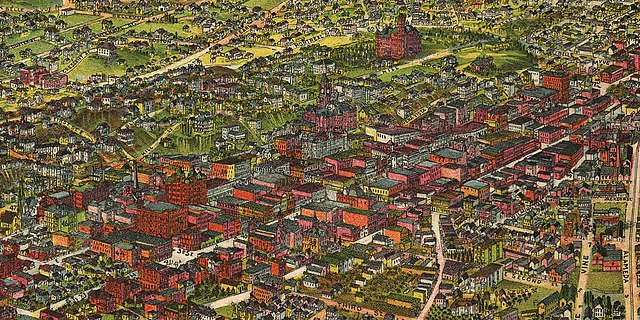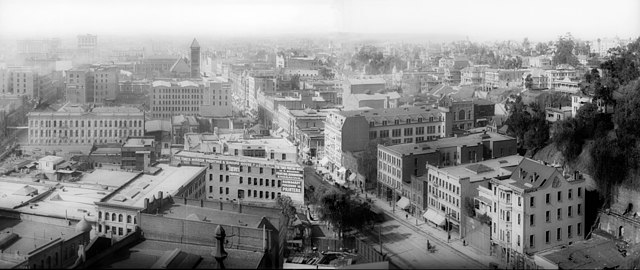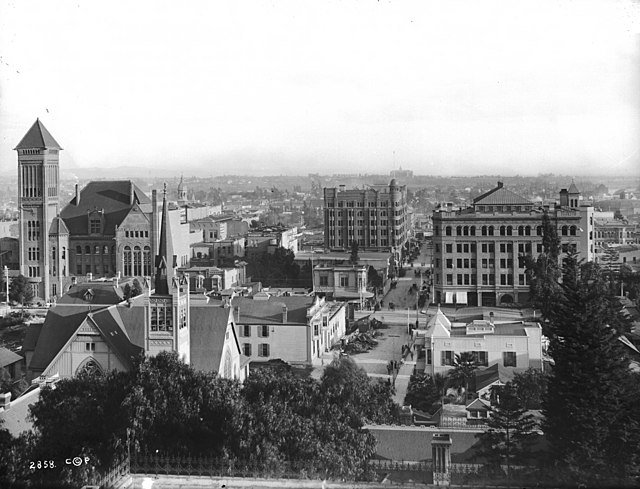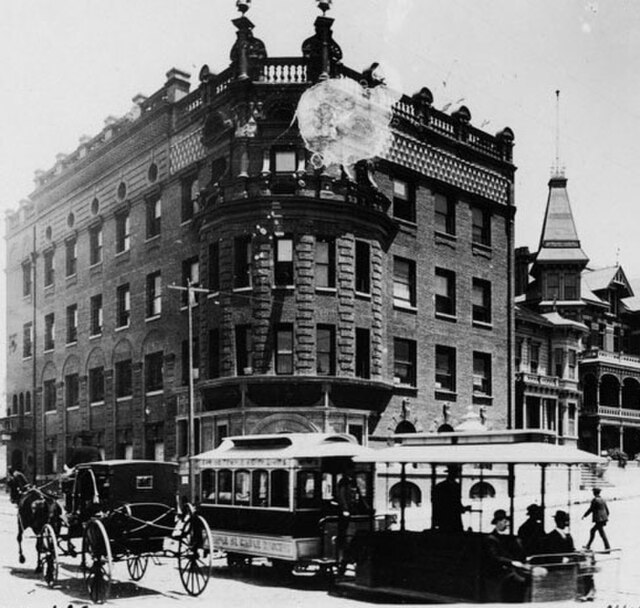History of retail in Southern California
Retail in Southern California dates back to its first dry goods store that Jonathan Temple opened in 1827 on Calle Principal, when Los Angeles was still a Mexican village. After the American conquest, as the pueblo grew into a small town surpassing 4,000 population in 1860, dry goods stores continued to open, including the forerunners of what would be local chains. Larger retailers moved progressively further south to the 1880s-1890s Central Business District, which was later razed to become the Civic Center. Starting in the mid-1890s, major stores moved ever southward, first onto Broadway around 3rd, then starting in 1905 to Broadway between 4th and 9th, then starting in 1915 westward onto West Seventh Street up to Figueroa. For half a century Broadway and Seventh streets together formed one of America's largest and busiest downtown shopping districts.
S. Lazard & Co.'s store on Main St. between 1866 and 1872
Hamburger's, "The People's Store" Spring Street Early 1880s
Stern, Cahn & Loeb's City of Paris department store at 105-7 N. Spring St. (post-1890 numbering: 205-7 Spring), sometime between 1883 and 1890
Hamburger's building (later May Co. flagship) at 8th and Broadway, ca. 1912
Victorian Downtown Los Angeles
The late-Victorian-era Downtown of Los Angeles in 1880 was centered at the southern end of the Los Angeles Plaza area, and over the next two decades, it extended south and west along Main Street, Spring Street, and Broadway towards Third Street. Most of the 19th-century buildings no longer exist, surviving only in the Plaza area or south of Second Street. The rest were demolished to make way for the Civic Center district with City Hall, numerous courthouses, and other municipal, county, state and federal buildings, and Times Mirror Square. This article covers that area, between the Plaza, 3rd St., Los Angeles St., and Broadway, during the period 1880 through the period of demolition (1920s–1950s).
1894 drawing by Bruce Wellington Pierce: portion from Third Street (bottom left) to Plaza (top right). The Red Sandstone Courthouse with its clocktower is prominent at center. At upper right is Los Angeles High School on Fort Moore Hill.
1905 view south on Broadway from north of Temple Street. The Times Mirror printing house in foreground, marked 110 N. Broadway, now site of the Hall of Justice. Towers of the 1888 City Hall on the 200 block of S. Broadway in the distance. Fort Moore Hill, now leveled, at right.
c.1893–1900, looking east along Third St. from Olive St. on Bunker Hill. 3 buildings stand out from left to right: the 1888 City Hall (Broadway between 2nd/3rd), the Stimson Block (3rd & Spring), and the Bradbury Building (3rd & Broadway)
The Women's Christian Temperance Union Temple and a Temple Street Cable Railway car, 1890








